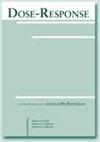The Anti-Hypoxic Mechanism of Sesamoside Determined Using Network Pharmacology
IF 2.4
4区 医学
Q3 PHARMACOLOGY & PHARMACY
引用次数: 0
Abstract
This study aims to elucidate the anti-hypoxia mechanism of sesamoside, an active component of Phlomis younghusbandii Mukerjee, through a network pharmacology approach. Sesamoside has demonstrated potential anti-oxidant and antiglycation activities. The hypoxia-related disease targets were collected from databases like GeneCards and OMIM. Protein-protein interaction (PPI) networks were constructed using the STRING database. GO/KEGG enrichment analysis was performed using the Metascape database to identify biological processes and signaling pathways. Our results indicate that sesamoside interacts with multiple targets related to glucose and lipid metabolism, nucleotide metabolism, and inflammatory, and we find that AKR1B1 (AR) plays a crucial role in sesamoside responses to hypoxia. Molecular docking studies were performed using Autodock software, revealing good binding activity between sesamoside and AR. We then use CCK-8 assay, qPCR, WB, and ELISA analysis to validate the role of sesamoside in regulating AR and participating in anti-hypoxia through cell experiments. The results show that compared with the hypoxia group, sesamoside treatment significantly improves the expression of AR and inflammation cytokines. In summary, this study sheds light on the anti-hypoxia mechanism of sesamoside using a network pharmacology approach, providing a theoretical basis and experimental foundation for its application in the prevention and treatment of hypoxic diseases.利用网络药理学确定芝麻苷的抗缺氧机制
本研究旨在通过网络药理学方法阐明芝麻苷(Phlomis younghusbandii Mukerjee 的一种活性成分)的抗缺氧机制。芝麻苷具有潜在的抗氧化和抗糖化活性。与缺氧相关的疾病靶点来自 GeneCards 和 OMIM 等数据库。利用 STRING 数据库构建了蛋白质-蛋白质相互作用(PPI)网络。利用 Metascape 数据库进行了 GO/KEGG 富集分析,以确定生物过程和信号通路。我们的研究结果表明,芝麻苷与葡萄糖和脂质代谢、核苷酸代谢以及炎症相关的多个靶点相互作用,而且我们发现 AKR1B1(AR)在芝麻苷对缺氧的反应中起着至关重要的作用。我们利用 Autodock 软件进行了分子对接研究,发现芝麻苷与 AR 之间具有良好的结合活性。然后,我们利用CCK-8测定、qPCR、WB和ELISA分析,通过细胞实验验证了芝麻苷在调节AR和参与抗缺氧中的作用。结果表明,与缺氧组相比,芝麻苷处理能明显改善AR和炎症细胞因子的表达。综上所述,本研究采用网络药理学方法揭示了芝麻苷的抗缺氧机制,为其在缺氧性疾病防治中的应用提供了理论依据和实验基础。
本文章由计算机程序翻译,如有差异,请以英文原文为准。
求助全文
约1分钟内获得全文
求助全文
来源期刊

Dose-Response
PHARMACOLOGY & PHARMACY-RADIOLOGY, NUCLEAR MEDICINE & MEDICAL IMAGING
CiteScore
4.90
自引率
4.00%
发文量
140
审稿时长
>12 weeks
期刊介绍:
Dose-Response is an open access peer-reviewed online journal publishing original findings and commentaries on the occurrence of dose-response relationships across a broad range of disciplines. Particular interest focuses on experimental evidence providing mechanistic understanding of nonlinear dose-response relationships.
 求助内容:
求助内容: 应助结果提醒方式:
应助结果提醒方式:


